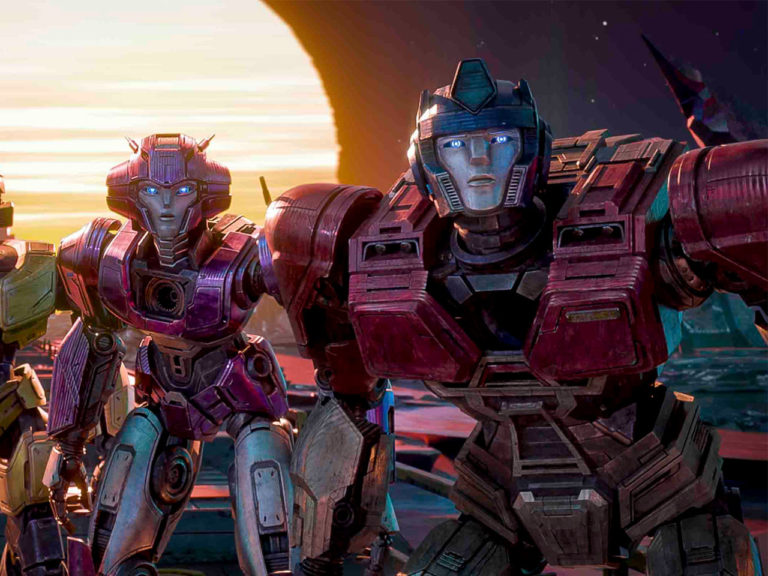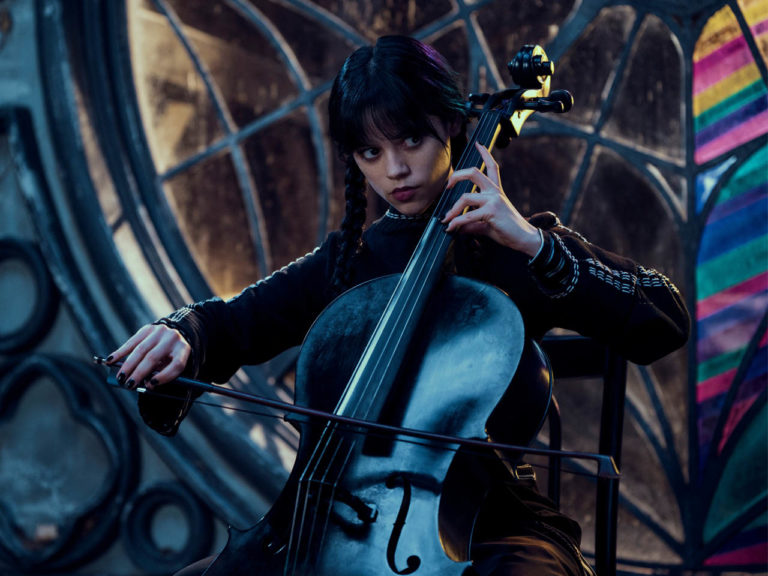
I am not doing great.
Last year, I had little going on in my life, and it was an endless source of frustration for someone just coming out of high school, and looking for direction. When I got this job, that was the first step to finding a routine I felt was both satisfying and rewarding. Then, I got a retail gig at a grocery store in my town, and suddenly I had a consistent income too. I’m certainly doing better than I was – but now that my understaffed store is being hit with the coronavirus panic, I’ve been working longer and harder hours in both the day and the night. I’m struggling to manage it all.
Superheroes often represent a sense of hope in these times. Superman is the most obvious example, but I’ve always liked how Batman provides an interesting juxtaposition: someone who looks like a villain, presenting kids with the hope of another tomorrow. But sometimes, Batman gets too wrapped up in the darkness of his world to keep carrying on that message. In a world like that, and a world like today, that’s why we need characters like Robin.
Robin represents something better: not just what Batman is, but what he’s ultimately aiming for. Bruce has had successes and failures in that regard over the years, but each iteration of Robin grounds him, giving him a humanity that makes him easier to relate to. I think that a lot of the stories in this book understand that, though the execution certainly varies. Let’s go through each story one-by-one, and tackle why this character has been so refreshing for 80 years running.
Dick Grayson, Robin in “A Little Nudge”

I mentioned some of what I thought about Wolfman’s The Judas Contract in my review of its Dark Multiverse adaptation, but I can’t deny I enjoyed his portrayal of Dick in the story. Like most stories of its time, it was a little too verbose, but it worked for Dick; he was going through a transformational period in his life, and that self-reflection came across as genuinely insightful. That carries through here, in a story that provides a new, accessible way to understand why Richard initially left the role of Robin. The split that’s portrayed in this story is ultimately small-scale, yet very impactful. It’s a character-driven piece that discusses the growing disconnect between Bruce and Dick, and how they ultimately resolve it. It plays almost like a breakup, but an amicable one: you really understand both sides as Dick takes his leave, and it’s easy to see how the two would remain on good terms following this. Tom Grummett’s art is very nostalgic (it helps that he’s worked on Titans with Wolfman before), though the digital colouring dulls some of its potential impact. Despite this, for those who were never filled in on details regarding Dick’s transition from Robin to Nightwing, this is a great, simple story that covers his thoughts on the matter. 8/10
Dick Grayson, Nightwing in “Aftershocks”

Scott McDaniel and Chuck Dixon reunite after their work on Batman: Cataclysm to deliver a story in that same era, to fun but ultimately middling effects. It’s certainly enjoyable: the scale of Cataclysm is something that hasn’t been touched on all that much since the event itself, so it’s refreshing and interesting to see Nightwing swinging from a car attached to a construction hook! The ending is rather sweet too, and definitely brings some much-needed heart to contrast with the dynamic visuals and action of the short. It doesn’t provide much else, but there’s nothing wrong with simple and effective. No one is saying comic book shorts are easy! But I think there was too little to latch on to that really gave this story a punch, other than one or two sweet character moments with Grayson. 6/10
Nightwing & the Titans in “Team Building”

My complaints with the previous story are still relevant here, though perhaps a little less so! Here, there’s some real meat to this tale: Damien Dahrk’s plan is thwarted by the Titans, and he and his men take some time to pour through their “battle strategy” and figure out where they went wrong. While this was never my era, it’s a genuinely good time, especially if you’re familiar with members of the Titans past Nightwing! The H.I.V.E agents are quite funny, and provide some levity to Damien’s unpacking of how the villains failed, yet again. More importantly, though, it barrels down on what Dick is so good at: working in, along with leading, a team. I like the stories in this book that have a clear statement, and it’s clear to see that Grayson and Jurgens were looking to portray a Dick who was in control like his mentor, but friendly and approachable like a real leader. 6.5/10
Dick Grayson, Agent 37 in “The Lesson Plan”

Damn, this book has a LOT of the first Robin in it. Not that I’m complaining, of course – I’m always in the mood for a healthy helping of Dick (Grayson). There’s nothing much more Grayson than Grayson, either! King, Seeley and Janín delivered a book of consistent and delightful quality for an impressive amount of time, and it’s nice to see them return in this short for a sort of victory lap. I honestly feel that King and Seeley in particular need to do more collaborations together, and this story is a (mostly) effective reminder of why I feel that way. Excluding a weird scene with Dick and a gorilla (don’t ask), the tale remains enjoyable due to the emotional connection we’re carrying throughout what is ultimately a fairly standard plot. As said plot goes from scene to scene, we see Dick recounting different “lessons” that Bruce taught him throughout the years. I can see those who aren’t a fan of King’s Batman disagreeing with what we see presented as his teachings, but the ultimate purpose they serve – establishing what makes Dick so different from Bruce, and so refreshing as a result – trumps any inaccuracies one might find regarding their relationship. The ending in particular brings it all home for me, and while I now feel like I should reread Grayson to see if it still holds up (that gorilla scene was REALLY weird, guys), it brought me back to a time when I was a younger boy, sitting down by my laptop and reading one of the best comics to be birthed from DCYou. 7/10
Jason Todd, the Red Hood in “More Time”

This is far and away the best story in the entire comic.
…
…Okay, I should say a little more. But I don’t want to. Just showing the two final panels runs the risk of ruining the magic feeling I got while reading this story. This is a beautiful callback to the many facets of Jason that make him such an interesting character, set in the era where I was really introduced to Batman. Under the Red Hood is both an incredibly underrated comic and movie – they get plenty of praise but damn it, it’s not enough – and Judd Winick carries the emotion of that book into this short story as if barely a month has passed since it was made. Meanwhile, Dustin Nguyen is one of my favourite artists, period. Heart of Hush, along with the rest of Dini and Nguyen’s run, remains one of the best reading experiences of my life, and I can’t understate how much his art just works for me. In this comic, he employs a slight change of style between the past and the present: his younger Jason reminds me of some of his more recent, youth-oriented work, while Red Hood in the present feels like it was taken from an epilogue of Streets of Gotham (shoutout to John Kalisz for helping to set the mood with his colouring!). It makes me yearn for what was lost with the New 52 reboot: there was a certain grim yet enthralling tone to Batman’s comics that I think recent years have struggled to replicate (not that they have an obligation to). As it stands – and maybe this is a sense of nostalgia talking – this remains the simplest, yet most emotionally resonant, story in the entire book. 10/10
Tim Drake, Robin III in “Extra Credit”

Tim Drake gets two stories in this comic, and understandably so: he’s a vitally important part of Batman’s history, despite any claims to the contrary. This story seems to be an attempt by Adam Beechen and Freddie E. Williams II to introduce that concept to unfamiliar readers. In Extra Credit, we see Drake talking to a guidance counsellor about finding a place in law enforcement, the conversation juxtaposed with Tim’s night-time exploits. The dialogue feels pretty real and relatable here: schools often judge potential students by their extra-curricular activity, despite however high your grades are. Juggling school life with being Robin would be hard as it is, and you get the sense that Tim is far too busy with his second life to really get a handle on the first. You also, however, get the sense that he doesn’t mind. There aren’t many new insights to be found about Tim in this book beyond a basic presentation of his abilities and enthusiasm – that’s not inherently bad, but they’re pages you could have used to portray something deeper and more compelling than how Tim is doing in school. To me, this feels like a primer to Tim, an easy read that details why his life stands apart from the other Robins; that’s all well and good, and the busy art style always gives you something vibrant to look at. Even so, I can’t imagine someone even remotely familiar with Tim getting much out of this. 5/10
Tim Drake, Red Robin in “Boy Wonders”

Tynion has now written Tim rather extensively in the pages of Detective Comics, and I think he has a rather good handle on his character. He understands complaints fans have had of his role in comics as of late: a strange middle child of the Robin family who struggles to find his own niche. This was particularly prevalent a few years ago, which is where Tynion sets this book: before the events of his Rebirth run, Tim consults the other Robins about where to go in his life, and what to do with himself. Fernandez’ art really makes this a fun time to look at, and there are excellent visuals throughout the entire story, as Tim hops from Dick to Jason to Damian, each providing different but unique insights as to what Tim could do with himself. The scene with Damian is probably my favourite, considering how far their relationship had come since their first meeting in the pages of Batman and Son. If you’ve read Detective Comics though, you’ll see it covers a lot of the same ground that story had already tackled, albeit more concisely. I think I’m getting a little tired of seeing Tim unsure of where and who he wants to be, and I get excited whenever he finds something that feels distinct to his character. Even so, this is a well-written issue that ties into a good run and makes a case for Tim’s continued importance in, and beyond, the Bat family. 7/10
Stephanie Brown, Robin IV in “Fitting In”

…Look, I’m not going to pretend I’m the most familiar with Stephanie Brown. I read (and liked!) some of her content in the final days of DC pre-52, and have kept up with her relatively consistently from Batman Eternal to Young Justice. She’s a clever and fun character who’s insightful and challenges the family in her own way, and I like seeing more of her.
I don’t really like seeing her boobs and thighs tearing out of Tim’s Robin suit, and her talking about wedgies in rather uncomfortable closeups.
The short is rather simple (and generic) beyond that; another story about a new Robin trying to prove themselves when held up to the Robins of the past. The art style is distinct, though a little too extreme and disproportionate for my tastes – none of it really gels with me. I felt kind of uncomfortable reading it, and I don’t think it feels like the most appropriate story to tell about Stephanie and what makes her distinct, in an issue about 80 years of Robin. I have to wonder if I’m alone in this, because the story obviously isn’t meant to be taken that seriously. I’m curious what everyone else thinks about it. 3/10
The Super Sons in “My Best Friend”

Easily the second-best story in the issue. Any excuse to see the Super Sons young and having fun together is a delight in and of itself – ESPECIALLY with Jorge Jimenez tackling art – and it works as a concise and punchy thesis statement for the relationship between Jonathan and Damian. It’s clearly intentional, too: the presentation of Jonathan writing an essay makes for wonderful narration, and seeing as I have an English teacher for a father, Jon being pestered by Lois about how to write his work is pretty relatable. Sometimes the narration contradicts the art too, and the way Tomasi and Jimenez frame it works to comedic effect. These two are incredibly cute together, though stories like this always have a bittersweet pang to them now. I can’t understand why anyone thought it’d be right to age these two best friends apart from one another. Let’s hope these creators find more excuses to show the Super Sons in their younger days. 9/10
Damian Wayne, Robin: Son of Batman in “Bat and Mouse”

When I first finished this story, I have to admit I felt disappointed. After all those interesting stories about the Robins over the years, you end it on a stinger for an upcoming book? I shouldn’t be surprised of course – each of the anniversary books have done this as a method of reeling readers into new stories. It was when I got over this initial bout of cynical frustration that I realized the story itself was actually really good. Robbie Thompson and Ramon Villalobos both are relatively new to DC, but they each bring something to the table that interests me. Villalobos’ art reminds me of the things I actually liked about The Golden Child, and Thompson portrays Damian and Bruce as strained in a compelling way. Their interlocking narration as they both get closer and closer to connecting is very enthralling, and makes you want to root for them finally making that bond at the end of the story… but they don’t. I felt more invested in this story than I initially thought, and I feel like I want to see where this new and promising team goes with this. 8/10
Recommended If…
- Robin means something to you.
- You miss Super Sons and want a fantastic Jason story from a classic team!
- You’re okay paying a pretty penny for some stories that are ultimately “just okay”.
Overall
I don’t think a lot of these books make the best use of their page time – but most every one of them understands why Robin is so important. Dick Grayson is an ideal people can strive towards, Jason is a hopeful case study of how one can come back from the brink, Tim is an example of how anyone can achieve excellence, Stephanie shows you can take something old and make it your own, and Carrie… only gets a drawing by Frank Miller. Oof.
In any case, while (like all anniversary issues) I disagree with the importance of some of these stories, you’re getting a lot of good content in this issue – the great stuff is fantastic, and it’s just a matter of if you think it’s worth the price of the overall package. For me, though, I think I needed the reminder of why Robin is so important. Robin knows something that people often need a reminder of when they’re caught up in the crises of the day: we can keep moving forward. And we will.
Score: 7.5/10
——————
Disclaimer: DC Comics provided Batman News with a copy of this comic for the purpose of this review.


